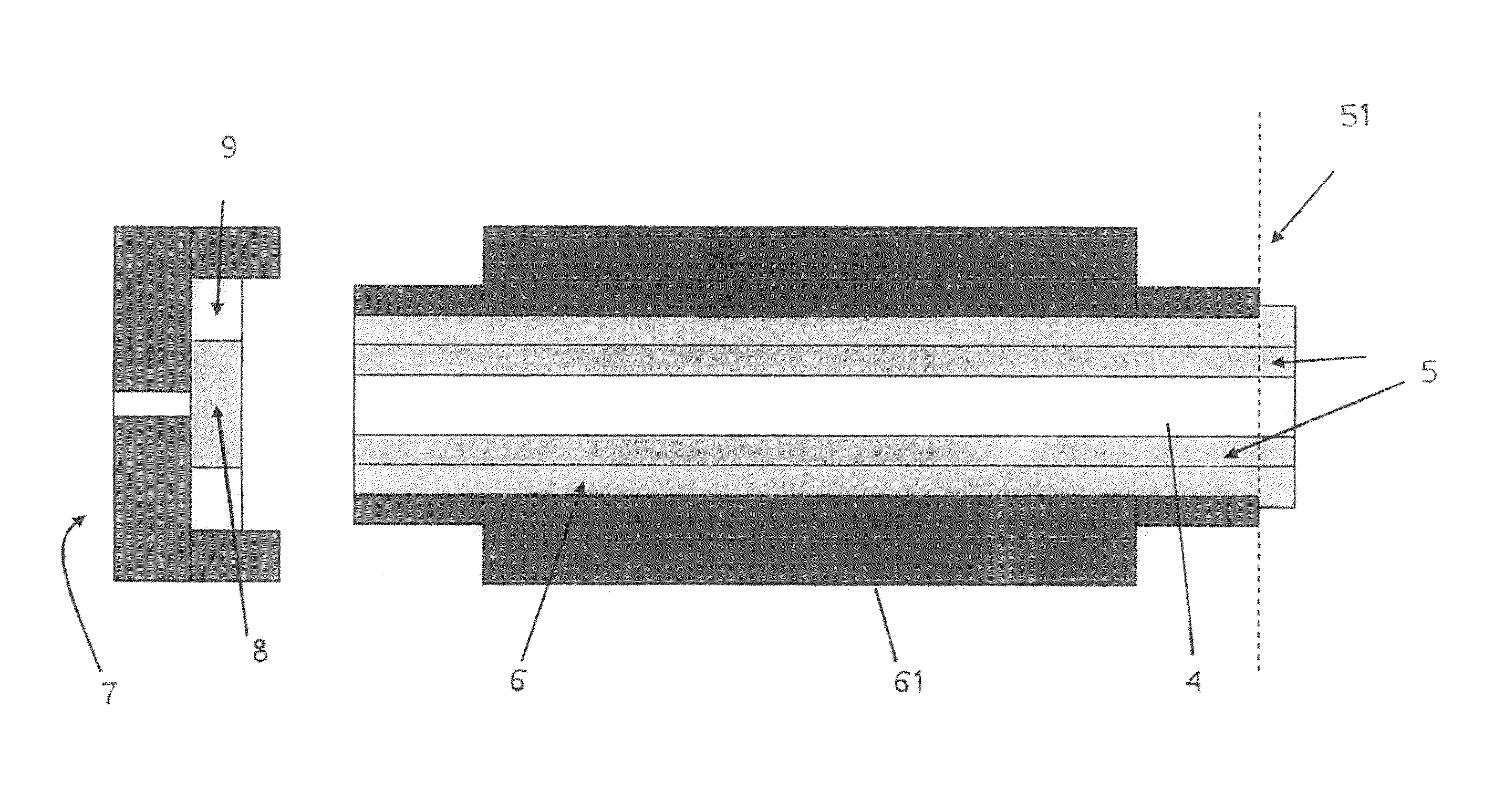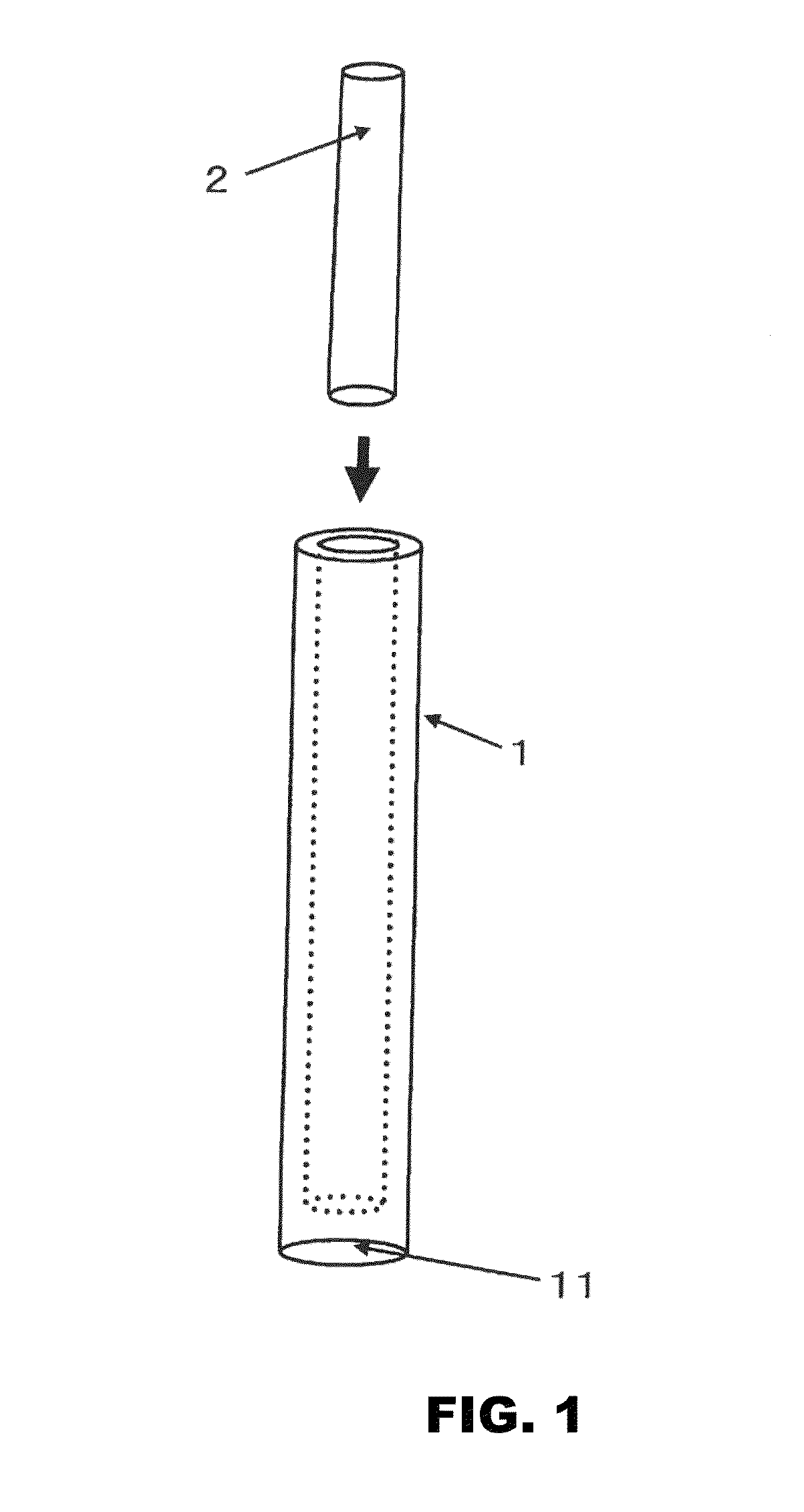Method of cladding monolithic silica body and separation medium
a monolithic silica and separation medium technology, applied in the direction of glass reforming apparatus, chemical/physical processes, inorganic chemistry, etc., can solve the problems of inability to make full use of the advantages of monolithic bodies, inability to directly use separation medium, and easy damage of monolithic bodies alone, etc., to achieve easy chemical treatment in the production process and high production efficiency
- Summary
- Abstract
- Description
- Claims
- Application Information
AI Technical Summary
Benefits of technology
Problems solved by technology
Method used
Image
Examples
example 1
[0113]The technique of the present invention is compared with a technique of preparing a monolith in a fused silica capillary.
[0114]In the present invention, 2.4 g of polyacrylic acid (HPAA available from Sigma-Aldrich Co., average molecular weight: 100,000 Dalton, average polymerization degree: 1390) was dissolved in 4.0 g of 1M nitric acid and 1.0 g of formamide, and 6.51 g of tetraethoxysilane was added to the solution and the mixture was mixed for 10 minutes to hydrolyze tetraethoxysilane.
[0115]The solution was poured into a cylindrical container having an inner diameter of 3 mmφ, and the whole container was sealed and kept at 40° C. for 2 days to cause phase separation and gelation. The solvent of the resulting gel was substituted with 1.5 M ammonia solution, and the solution was kept at 110° C. for 4 hours. Then the gel was dried in the air at 40° C. for 2 days and heat treated at 600° C. for 5 hours.
[0116]The resulting monolithic silica body was put in a low melting point gla...
example 2
[0146]The behavior of elution of pyridine, a basic compound, was examined using the column of Example 1 of the present invention and a commercially available HPLC monolithic column clad with PEEK resin.
[0147]Although pyridine sharply eluted before phenol in the column of the present invention, tailing of pyridine peak and phenol peak is observed in the conventional column. It is considered that since a chemically treated monolithic body is clad with resin, the resin is not treated and highly hydrophobic in the conventional column, and so the shape of peaks of water-soluble compounds such as pyridine and phenol became poor due to the hydrophobic difference between the inside and portions near the tube wall.
[0148]It is also considered that chemically treated portions have been degraded upon cladding with resin to allow silanol faces to be exposed, affecting the shape of peaks.
[0149]In the present invention, since the monolithic body is coated with glass having the same main component ...
example 3
[0152]The identification (normal phase) of the performance of clad glass depending on the difference in fusing temperatures when using Pyrex glass was performed as follows. Fusing at 650° C. has been proved to be unsatisfactory because no peak was found. Fusing at temperatures higher than that has been proved to be satisfactory because peaks of samples were found. The highest theoretical plate number was obtained at 725° C. It is thought that at temperatures of 760° C. or higher, the monolithic silica skeleton is influenced by contraction due to the high temperature, and therefore the theoretical plate number is decreased.
[0153]The above shows that the Pyrex glass body and the monolithic silica body are firmly fused at 700 to 800° C., providing a column which can be put into practical use.
[0154]As described above, the best result was obtained at 725° C. in this Example. It is considered that the result is close to the ideal, complete assimilation of the inner surface of glass and th...
PUM
| Property | Measurement | Unit |
|---|---|---|
| pressure | aaaaa | aaaaa |
| melting temperature | aaaaa | aaaaa |
| melting temperature | aaaaa | aaaaa |
Abstract
Description
Claims
Application Information
 Login to View More
Login to View More - R&D
- Intellectual Property
- Life Sciences
- Materials
- Tech Scout
- Unparalleled Data Quality
- Higher Quality Content
- 60% Fewer Hallucinations
Browse by: Latest US Patents, China's latest patents, Technical Efficacy Thesaurus, Application Domain, Technology Topic, Popular Technical Reports.
© 2025 PatSnap. All rights reserved.Legal|Privacy policy|Modern Slavery Act Transparency Statement|Sitemap|About US| Contact US: help@patsnap.com



